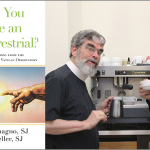Tools for Thinking Sensibly about Scripture
NOTE: Over the past several months, we've had lots of combox discussion about how Catholics read and interpret the Bible. To help us all make sense of this question, we began a multi-part series on the topic. Once a week, for the next several weeks, Mark Shea will unpack how Catholics authentically read the Bible. Last week he offered a general introduction, today he outlines three specific guidelines, and next week he'll begin covering the three main spiritual senses (or lenses) through which Catholic interpret the Bible—allegorical, moral, and analogical.
For some folks, including not a few Catholics, it takes a lot to dispel the myth of the hyper-controlling Church that only permits Bible study after the insertion of the Vatican Orbital Mind Control Laser Platform chip in the frontal lobe of the brain. Indeed, it may come as a shock to such folks to discover that the Church offers Catholics only three guidelines when pointing toward reading Scripture for its literal sense. Dei Verbum tells us:
1. Be especially attentive “to the content and unity of the whole Scripture”;
2. Read the Scripture within “the living tradition of the whole Church”; and,
3. Be attentive to the analogy of faith.
That’s it. That’s all the Church offers. What do these guidelines mean? In part, as we saw last week, they mean that when you read the Bible, you need to pay attention to what sort of literature you are reading. But other things come in as well.
The Bible is a sort of organism, like a goldfish. Many moderns don’t think of it that way, insisting instead that it's just a collection of human writings from widely divergent sources that got stitched together pretty roughly and is therefore “full of contradictions”. Many Bible students, both Catholic and atheist, concern themselves almost entirely with looking for the “contradictions” and shabby seamwork. This can sometimes get pretty silly, as when A.N. Wilson discerns a fraudulent claim that Jesus was a “carpenter” since “no carpenter in real life came anywhere near to having a plank sticking out of his eye".
From the perspective of sane biblical study, this entire approach (technically known by Catholic theologians as the “hermeneutic of suspicion”) is sort of like looking at a goldfish and seeing only a circulatory system, an excretory system, a pair of gills, a pair of eyes, some randomly distributed fins, a bunch of scales, a nervous system, and various connective tissues, all of which just happen to be crammed into a goldfish-shaped space—and then spending all your time looking for “junk DNA” in the goldfish cells while steadfastly ignoring the swimming, living fish.
In fact, the remarkable thing about Scripture is the organic unity of growth one sees in it. Seen from the Catholic perspective, it looks pretty much like what it is: the written record of a Tradition that is growing just like the mustard seed and revealing the gradual revelation of God to man, culminating with the Incarnation of God in Jesus Christ. Yes, you can see the stitching at times, as when Genesis combines two accounts of creation. (But so what? That’s only a problem if you believe the Bible is a purely divine book, not a book written and edited by humans.) So, to be sure, the human authors of Scripture display change over time. But it is the sort of change one expects in a growing thing, not a mutating thing. Ideas found in seed form early on (such as “I am the God of Abraham, Isaac, and Jacob”) break out in huge leafy branches later on (such as the conviction found in the prophets and the books of the Maccabees that God will defeat death and even raise the dead at the end of time).
We discover, as we read, that the Bible is an immense conversation across the ages. For Catholics, the Old Testament longs for and looks forward to the New and the New is only comprehensible in light of the Old. In short, there really is a unity to the whole of Scripture. So all of us, regardless of our religious worldview, do well to read it with that in mind. Each verse is related to the verses before it, each paragraph is related to the paragraphs before and after, and each book, especially in the New Testament, is not really comprehensible if you don’t know the other texts to which the author is alluding. So a return to the understanding of Scripture as a single organism, and not merely as a collection of loosely connected cells or systems, is the first order of business for effectively reading the Bible.
The next order of business is realizing that a living goldfish won’t live long outside the water. If you want to get to know the goldfish of Scripture better, the paradox is that you cannot do so by removing it from the Sacred Tradition of the Church, which is the water in which Scripture swims. The absolute worst way to read the Bible is to just go off with it by yourself and ask, “What does this text mean to me?” Catholics approach the text by finding out, as best we can, how the author and his readers would have understood it.
We know to do this with other books, but something goes awry when it comes to the Bible. Many people believe that the Tradition—that is, the fruit of millions of lives of prayer and sanctity, not to mention scholarship of a very high order and even, in some cases, personal familiarity with the apostles themselves—is absolutely worthless if it contradicts one's strongly felt intuition about what the Bible really means.
This faulty approach is primarily a fault of the will, not the intellect. It affects Catholics and atheists alike, and the solution requires humility and a basic reorientation away from self and toward God's revelation through his Church (not just a vague admission that, now and then, the Church gets it right by agreeing with my view of the Bible.) Such a reorientation is vital because without it, the biblical reader inevitably winds up depriving the Scriptural goldfish of the water of Tradition which it requires in order to live.
But let's move on. To keep the water of Tradition from being spilled, the Church tells us to “be attentive to the analogy of faith”. This cryptic remark means, basically, “hold on to the defined teaching of the Church”. The “analogy of faith” is the goldfish bowl that holds the water of Tradition. Without it you’ve got water all over the floor and, soon, a dead goldfish.
So what’s the “analogy of faith”? Well, an analogy is a thing that’s like something else. So a photo of my wife is an analog of my wife. It looks just like her, but it’s not her. The Church proposes various analogies of the Faith to us, such as the Creeds or the dogmas of the Church, to give us a sense of what is and is not part of apostolic Tradition.
A dogma is not the forbiddance of thought (as is commonly supposed) but the conclusion of thought: it’s what you get when you are done thinking something through. Periodically, questions arise in theology as they do in every field. When they do, the Church thinks the problem through and, when the occasion requires it and the Spirit wills it, the Church defines its teaching. The first time this happens is recorded in the book of Acts. The Church is confronted with the question, “Do Gentiles need to keep the ceremonial laws of Moses?”. The Church arrives at the momentous conclusion that Christians are saved by faith in Jesus Christ, not by circumcision, keeping kosher, and so forth. They promulgate this decision in the shocking words, “It seemed good to the Holy Spirit and to us...” meaning that the dogma promulgated by the apostles and the elders is the authentic guideline for understanding the meaning of the Tradition with respect to this question.
Where do they get off talking this way? Well, to be fair, they formed the impression because of what they heard from Jesus Christ, who told them “He who listens to you listens to me” (Luke 10:16). So it’s pretty much in the DNA of the Church. It appears Jesus had enough foresight to know that the Church would need a permanent teaching office to navigate the waters of history, just as the American forefathers knew the country would require Congress, judges, and a President to interpret the Constitution through time.
So that's a brief introduction to the three guidelines Catholics use when properly interpreting Scripture. Next week we'll begin exploring the three spiritual senses, or lenses, through which Catholics read the Bible.
Related Posts
Note: Our goal is to cultivate serious and respectful dialogue. While it's OK to disagree—even encouraged!—any snarky, offensive, or off-topic comments will be deleted. Before commenting please read the Commenting Rules and Tips. If you're having trouble commenting, read the Commenting Instructions.













